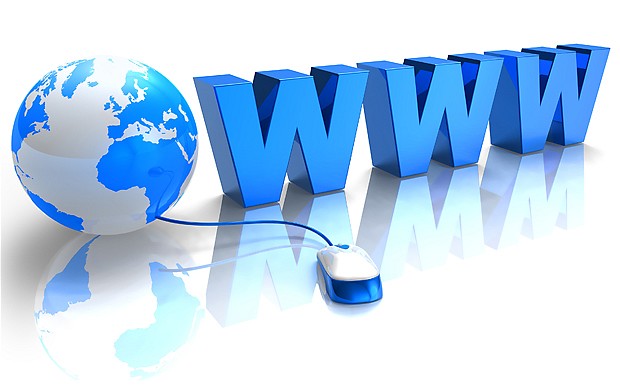By: Levi Henrikson
If you went to business school, you may recall the excruciating memory of having to sit through several accounting classes. If you’re like most entrepreneurs, you have likely also forgotten most of what you’ve learned in those courses. The personality types of someone who starts a business vs. someone who manages the finances are rarely one and the same. However, even the visionary entrepreneur comes to a point when he simply needs to know the “bottom line.” This article will give you a quick crash-course refresher.
From the business owner’s perspective, probably the most important concept you can understand is the difference between the two accounting methods: cash-based and accrual.
The Pragmatic Approach: Cash-based Accounting

Cash-based means that you record your transactions when the cash actually changes hands rather than when the money is earned. For example, if you send an invoice to a client for your work, you have technically earned the money but you wouldn’t even show it in your records until you actually see that money deposited into your account.
The nice thing about cash-based accounting is that you will always have an accurate picture of your cash flow. Unfortunately, we all know that just because someone owes you money, that does not mean that you will actually see that money show up in your account in a timely manner.
Cash-based accounting is a what-you-see-is-what you get system. You also don’t have to pay taxes on your income until you actually receive the cash.
However, the cash-based system does have one major flaw: it does not present an accurate picture of the correlation of income and expenses. For example, let’s say that you own a business that has a peak season in May, and you end up doing work for a dozen clients and sending out a dozen invoices. However, say only two of those clients pay you in May, six pay in June, and four pay in July. On paper, this would lead one to believe that your peak season is in June and July rather than May. This would make planning ahead somewhat problematic because you wouldn’t have an accurate picture of your business cycle.
So while the cash-based accounting system gives you an accurate historical picture of your cash flow it is limited in strategic planning. This is why many larger or fast-growing businesses prefer to use the accrual-based accounting system.
The Strategic Approach: Accrual-based Accounting

In accrual-based accounting, income and expenses are tracked as they are earned, or accrued, rather than when the cash is received. This gives a more accurate picture of how your business performs over time by associating income at the point in time your sales were made and associating expenses with the time that they were used rather than when they were paid for.
As you may expect though, accrual-based accounting is not without its disadvantages as well. Accrual-based accounting is more complex. For example, if you pay $12,000 upfront for a year’s rent it must still be recorded as $1,000 each month as the service is used rather than a one-time expense.
Due to the complexity and time requirements of accrual accounting, many small business owners will feel the need to hire an accountant to record the expenses with this method.
Another drawback is that you also may be required to pay taxes on income you haven’t actually received if you are unable to collect the cash for your work prior to taxes being due.
Which Accounting Method is Best?
In some cases, this is an easy decision to make because the GAAP (General Accepted Accounting Principles) makes the decision for you. For example, if you handle any kind of inventory, whether you’re a small retailer or a large manufacturer, you are required to use accrual-based accounting.
If, on the other hand, you are operating as a sole proprietor or some kind of small service-based business like a consultant or a freelancer, you may just want to stick with cash-based accounting. It is much simpler, you can easily do it yourself if you need to, and you won’t have to pay taxes on anything but the cash you actually received. And if your company grows and brings on more staff, you can always switch accounting methods when your business is more mature.
What Tools Can I Use?
Let’s get practical. What are some the tools we can use to make tracking our expenses and cash flow easier?
If you don’t like to use spreadsheets there is good news: there are some great user-friendly tools out there that make accounting for the “Average Joe” a lot easier. It may be a stretch to say this, but accounting is almost becoming “sexy.” (Well, maybe not “sexy” but at least a lot easier and a little more interesting.)

Here are some suggestions:
Wave Accounting (best free software) – If you are really in a tight bind financially you can still track your expenses effectively without having to pay for a software program. Wave Accounting offers many of the same features as paid software but for free. Of course the drawback of “free” is that you get no customer service, you have to deal with advertisements, and if you’re planning on growing your company beyond a basement-operation you will likely outgrow it very quickly.
Zoho (for really small businesses) – Zoho Books is a great paid option for really small businesses. They provide all the features a typical very small operation (i.e. less than 10 employees) would need at a reasonable price. At the time of this writing they offer plans ranging from $9 to $29 a month.
FreshBooks (best mobile app) – If you travel a lot or just prefer to do most of your computing on your tablet or mobile phone, you may want to consider the FreshBooks mobile app. Unlike other mobile accounting apps, the FreshBooks mobile app is actually a comprehensive program that doesn’t compromise on features.
Less Accounting (best automation program) – If you’d prefer to have as much of the accounting process as possible automated and are willing to fork over a little extra each month for this benefit then Less Accounting may be a good choice for you. Like the name suggests the purpose of this software is to help you spend less time doing accounting. Less Accounting will automate everything from data entry to billing so that all you have to do is monitor the numbers and make sure everything is working like it should.
QuickBooks Online (the standard) – We can’t forget about the tried-and-true QuickBooks. This is the standard for most professional accountants. While it may seem a little daunting to the uninitiated it is nevertheless the most comprehensive accounting software available for small businesses. It is packed with just about every basic or advanced feature you would ever need.
TabWare (for moveable assets) – If you run a more complex business where you have to manage a lot of inventory and moving assets such as a manufacturer, then you’ll likely want to get an asset management system such as TabWare. This is a program that makes it easier if you have to consider maintenance, spare parts, IT management, and safety management into your accounting equations.
The “Bottom Line”

Accounting is not as daunting as it sounds. There are software programs designed specifically for small business owners that makes the process much easier. You really don’t need to know everything. Just know the basic concepts and you’ll be fine.
If your worries about accounting is what is preventing you from moving forward with your business plans, just keep it as simple as you possibly can. Earning more money is a lot better than doing nothing–no matter how it’s accounted for.



